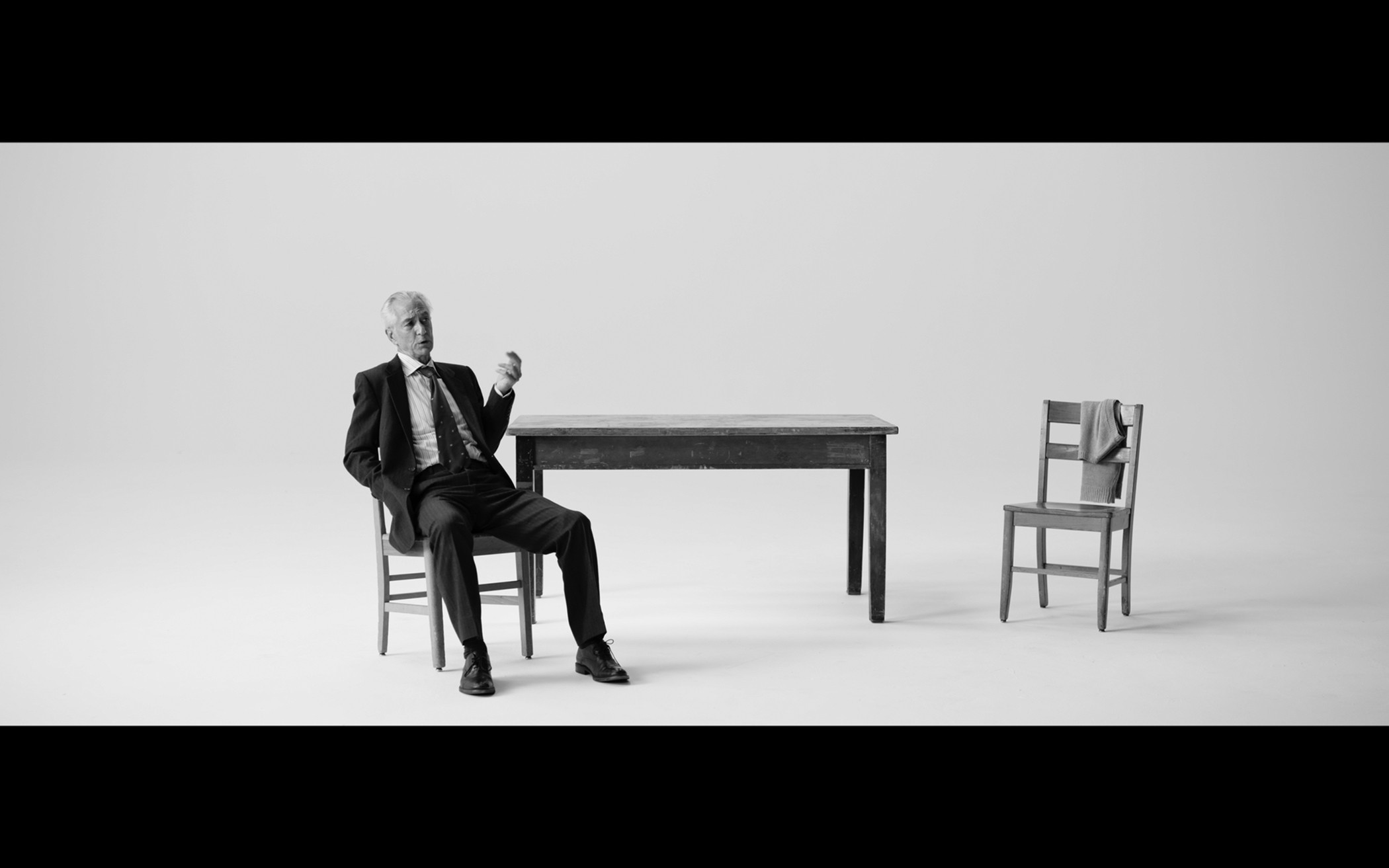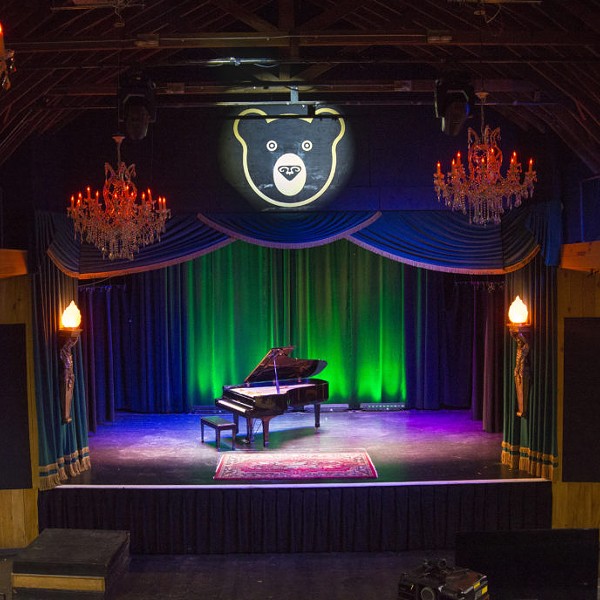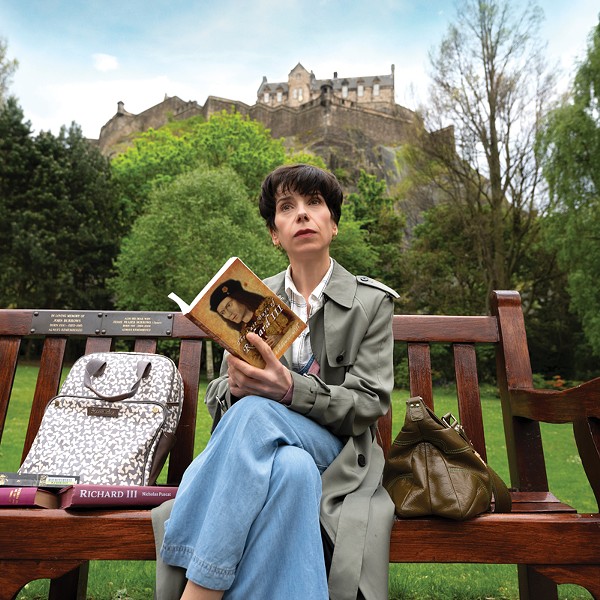The film Remember This tells the story of Jan Karski, a member of the Polish resistance during World War II, who was invited by Jewish comrades to visit the Warsaw Ghetto, and a transit camp for Jews on their way to execution. Later Karski reported his experiences to intelligence officials in London, and ultimately to Franklin Delano Roosevelt. Karski’s attempts to save European Jewry failed, however. He went on to become a political science professor at Georgetown University for 40 years. The film, which screened at the Woodstock Film Festival in September, is based on a one-man show starring David Strathairn, which just finished its run at Theater for a New Audience in New York City. I spoke with Jeff Hutchens, the film’s cinematographer.
Chronogram: How did you become connected with the film?
Hutchens: Our executive producer, Eva Anisko, had seen "Remember This: The Lesson of Jan Karski" performed as a play in London, and was incredibly moved by it, and wanted to see if there was a way that we could bring it to wider audiences. So she began a conversation with Derek Goldman, the director (who also co-directed the film adaptation), and then she reached out to me. She sent over some rehearsal footage, and I could tell immediately that it was performed at an incredibly high level, and was something that I wanted to be involved with.
We ended up shooting in June of 2020—in the middle of the pandemic—and was actually one of the first film shoots back for a lot of the crew, because the entire production world had basically shut down in March. I had a couple of projects I was shooting, one of which was an HBO feature doc, and because of the Covid protocols—we were actually shooting in Kansas—me and the crew were living and working out of RVs. The reason I bring it up is because it was a phenomenal time for me to fully familiarize myself with the language of the play. As I was driving from Washington, DC to Topeka, Kansas, I had the audio of the play on repeat for hours and hours and hours. It got to the point where I could almost recite it verbatim. As I was driving down the highway, I could imagine where the camera should be relative to Jan Karski in any given moment.
Chronogram: Did you consider shooting it in color?
Hutchens: Right out of the gate I was imagining that we would approach it as a monochromatic piece. First of all, just from a strictly aesthetic standpoint, we could make bolder choices in black-and-white. And if we were to have filmed it in color, it would have been more specific to a time and place. Whereas stripping away the color and embracing the minimalism that was already present in the play allowed us to capture Karski’s story and the themes more universally.
The play, like the film, is an elegantly minimalist set: it’s a table, it’s two chairs. Because they had approached the stage play in such a stripped-down way, that’s exactly what we wanted to carry through with the film, but now we had the opportunity to change our proximity to David.
Chronogram: How close the camera is to Strathairn expresses some of the emotion in the film; is that it?
Hutchens: Yeah, exactly. Sometimes we’re literally inches from his face, because you want to feel how intense and overwhelming everything that Karski’s going through is, and other times we want to pull back as far as we could, because we wanted to have that sense of isolation, and magnify that. He’s afloat in a sea.
Chronogram: What is the structure of the film?
Hutchens: There are three different lighting schemas: a clean, clear, crisp white world, which bookends the film. That’s where there’s more moral clarity. Then there’s a gray world, which is memories that are touched by tragedy. Then there’s this black world, which is this surreal chaos of evil.
Chronogram: Where did you shoot the film?
Hutchens: We shot it in Brooklyn, in Williamsburg; It was in a massive white cyclorama—basically a blank space with curved walls, so it has this infinite feel to it. You’re just living in this white void.
Chronogram: Is it circular, the room?
Hutchens: The room is not circular. It’s, I’d say, 35‘ x 45‘. And because we wanted to enter into the black world, we shot half of our shoot in the white world, and after we wrapped that day, overnight we actually painted the entire background black, because that’s the only way we could have control of the lighting.
Chronogram: And for the gray world, you didn’t have to paint it gray?
Hutchens: Yeah, the gray was in the white space; it was a matter of making certain lighting choices. And the white world, the gray world, the black world, are defined by the lens choices. The Cooke S7i lenses are classic, pristine—those are for the white world spaces. The black world is a very hard, corrupted visual landscape—that was shot with a K35 lens, which is a flawed, vintage lens. Each lens basically has its own fingerprint.
Chronogram: The vintage lens is the one that makes these flares?
Hutchens: That makes the flares. And one of the other things, with both styles of lensing, I used a 50mm lens, in both styles of lens, which is equivalent to the normal human field of vision, because we wanted the camera to feel as if it were its own witness to Karski’s story.
Chronogram: What’s the normal Hollywood film shot in?
Hutchens: There’s not really a standard style. You can shoot anywhere from 12mm all the way up to 1200mm. People tend to stay within the 27mm to 80mm range.
Chronogram: How long did it take to shoot?
Hutchens: We shot over the course of six days, but there was a ton of prep, and the play itself had been in development since about 2014. It’s all one camera, so there are no cutaways. We didn’t have any alternate angles. If we didn’t land it on the day, there was really no way of fixing it in the edit, because we had no cutaways to go to. And some of the takes are as long as 15 minutes. We shot the whole thing on a 30 foot Technocrane; it has the ability to boom up and boom down, to shift right and shift left—and the camera has a tilt and pan on top of that.
Chronogram: A 15-minute take is pretty unusual, isn’t it?
Hutchens: These longer shots with complicated blocking, there are a lot of factors at play, so when you’re at 14 minutes and 50 seconds—that means that all those things have gone right to that point—everybody feels their tension rise: “Alright, we’ve got a land this! We’ve got to land this!” Because if not, then you go right back to the beginning and start the take over again. That’s a lot to ask from everybody. But David is an absolutely phenomenal actor, and a phenomenal human; he was an absolute joy to work with. And I feel like that extended to our entire team. Everyone was really motivated by trying to do justice to Karski’s story.
Chronogram: You never used a handheld camera?
Hutchens: No. At one point I was considering, for the blitzkrieg scene, going handheld, but we were able to find the right sense of movement by staying on the Technocrane. As the bombs drop, and David is cowering under a table, the camera is scooting along next to the ground, so the Technocrane was the right tool for that job.
Chronogram: And what about the editing?
Hutchens: Brandon Bray and I did the editing together; Brandon has an incredible sense of timing. So we locked ourselves away and assembled the film.
Chronogram: David Strathairn is quite an actor.
Hutchens: There’s one sequence in particular that I really love, where the camera is right up with him, and he’s so vulnerable and raw, and then a second later, he leans back and goes from being Karski to being this aggressive soldier who’s loading people onto a train. It’s just amazing, in the space of 2 feet, how he changes his entire posture and countenance. It’s one of these moments that you’re on set and you’re watching that happen, that you just feel it in your whole body.
Chronogram: There’s a point in the movie where Karski says: “I’m no James Bond…”
Hutchens: “I do what I have to do.”
Chronogram: But his story is like a James Bond movie! It’s more unbelievable than James Bond, because it’s a real person who ended up a professor for 40 years!
Hutchens: Yeah, and he was posthumously awarded a Presidential Medal of Freedom. And what’s miraculous is that through all the work he did, all the heroics he undertook, he was always self-described as “this insignificant little man.”
Chronogram: Maybe that’s the difference between real heroes and James Bond—real heroes, in general, have humility.
Hutchens: Yeah, absolutely.

















